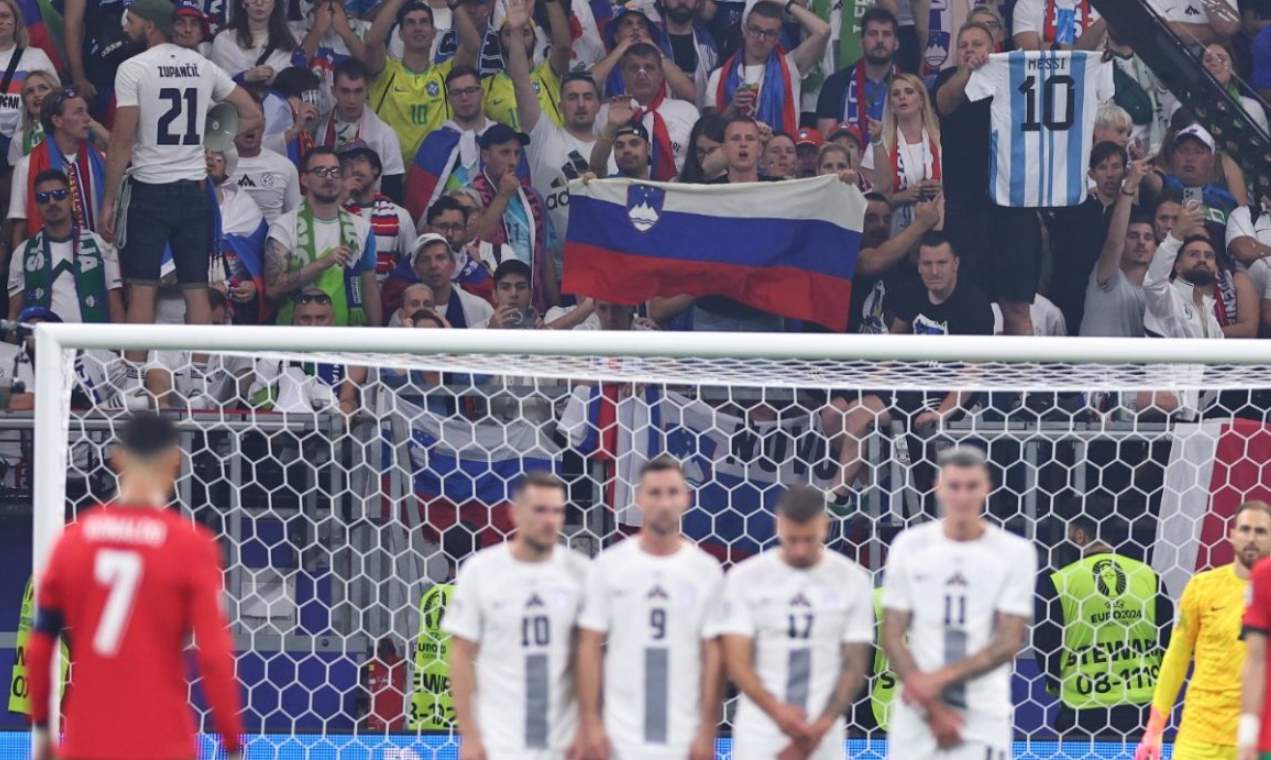Historical Context

Portugal vs slovenia – Portugal and Slovenia have a rich and diverse history, shaped by their unique geographical locations and cultural influences. Portugal, a maritime nation on the Iberian Peninsula, has a long history of exploration and trade, while Slovenia, a Central European country nestled in the Alps, has been influenced by various empires and cultures throughout its history.
Portugal and Slovenia are both teams with a lot of history in the sport, and they will be looking to add to their trophy cabinets when they face off in the final. But before the big game, be sure to check out beryl puerto rico for all the latest news and updates on the match.
The site has everything you need to know about the teams, the players, and the storylines that will make this game one to remember. So make sure to check it out before the big game!
A timeline of significant events in the history of Portugal and Slovenia:
- 1143: Portugal becomes an independent kingdom under Afonso Henriques.
- 1415: Portuguese explorer Vasco da Gama sails around the Cape of Good Hope, opening up a sea route to India.
- 1580: Portugal comes under Spanish rule.
- 1640: Portugal regains its independence.
- 1755: A devastating earthquake and tsunami hits Lisbon, killing an estimated 100,000 people.
- 1822: Brazil declares independence from Portugal.
- 1910: Portugal becomes a republic.
- 1974: The Carnation Revolution ends the authoritarian Estado Novo regime in Portugal.
- 1999: Portugal joins the European Union.
- 1991: Slovenia declares independence from Yugoslavia.
- 2004: Slovenia joins the European Union.
Cultural and Political Differences
Portugal and Slovenia have distinct cultural and political identities. Portugal, with its strong maritime heritage, has a vibrant culture influenced by its former colonies and the Atlantic Ocean. Slovenia, on the other hand, has a rich Central European culture influenced by its Slavic, Germanic, and Mediterranean neighbors.
Portugal and Slovenia faced off in a thrilling match, but news of the devastating Barbados Hurricane Beryl cast a shadow over the event. Despite the tragedy, the match continued, with both teams showcasing their resilience and determination. The final score was a testament to the strength and spirit of the players, who gave it their all on the field.
Politically, Portugal is a parliamentary democracy with a multi-party system. Slovenia is also a parliamentary democracy, but it has a more decentralized political system with a strong regional autonomy.
Economic Comparison
Portugal and Slovenia have experienced significant economic growth in recent decades, driven by various factors. Let’s delve into a comparative analysis of their economic landscapes.
GDP and Unemployment Rates
According to the International Monetary Fund (IMF), Portugal’s GDP in 2023 is estimated at $263.5 billion, while Slovenia’s is projected to reach $60.1 billion. Portugal has a higher unemployment rate (6.2%) compared to Slovenia (4.8%).
| Country | GDP (2023 est.) | Unemployment Rate (2023 est.) |
|---|---|---|
| Portugal | $263.5 billion | 6.2% |
| Slovenia | $60.1 billion | 4.8% |
Major Industries
Both countries have diverse economies, but key industries contribute significantly to their GDP. Portugal’s economy is driven by tourism, manufacturing (automobiles, textiles, and footwear), and services (finance, healthcare, and IT). Slovenia’s economy relies heavily on manufacturing (electronics, pharmaceuticals, and automotive), services (tourism, logistics, and financial services), and agriculture.
Factors Contributing to Economic Growth
- EU Membership: Both Portugal and Slovenia joined the European Union in 2004, gaining access to a larger market and increased investment opportunities.
- Foreign Direct Investment: Portugal and Slovenia have attracted significant foreign direct investment in various sectors, boosting economic growth.
- Structural Reforms: Both countries have implemented economic reforms to improve competitiveness, such as privatizations, tax incentives, and labor market flexibility.
- Tourism: Portugal and Slovenia are popular tourist destinations, contributing to their economies through revenue from accommodation,餐饮, and transportation.
- Skilled Workforce: Both countries have invested in education and training, resulting in a skilled workforce that drives innovation and productivity.
Tourism and Culture: Portugal Vs Slovenia

Portugal and Slovenia offer a diverse range of tourist destinations and cultural experiences that cater to various interests. From historical landmarks and architectural wonders to picturesque landscapes and vibrant cities, both countries provide ample opportunities for exploration and discovery.
Portugal is renowned for its stunning beaches, charming towns, and rich history. Visitors can explore the historic streets of Lisbon, marvel at the ornate architecture of Sintra, or relax on the golden sands of the Algarve coast. Slovenia, on the other hand, boasts breathtaking natural beauty, including the Julian Alps, Lake Bled, and the Postojna Cave. It also offers a blend of medieval and modern architecture, as well as a vibrant arts and music scene.
Top Tourist Destinations
The following table summarizes the top tourist destinations in Portugal and Slovenia:
| Portugal | Slovenia |
|---|---|
| Lisbon | Ljubljana |
| Porto | Lake Bled |
| Sintra | Postojna Cave |
| Algarve coast | Julian Alps |
| Douro Valley | Piran |
Unique Cultural Experiences, Portugal vs slovenia
Beyond their stunning landscapes and architectural marvels, Portugal and Slovenia offer unique cultural experiences that reflect their distinct traditions and heritage.
Cuisine
Portuguese cuisine is known for its use of fresh seafood, grilled meats, and flavorful spices. Traditional dishes include bacalhau (salted cod), caldo verde (green soup), and pasteis de nata (custard tarts). Slovenian cuisine, influenced by neighboring countries, features hearty dishes such as jota (sauerkraut soup), štruklji (rolled dumplings), and potica (nut roll).
Music
Portugal is renowned for its fado music, a genre characterized by its melancholic melodies and expressive lyrics. Slovenia has a rich musical tradition that includes folk music, classical music, and modern pop. The Ljubljana Jazz Festival is one of the most prominent jazz festivals in Europe.
Art
Portugal has a rich artistic heritage, with renowned painters such as José Malhoa and Amadeo de Souza-Cardoso. The Museu Nacional de Arte Antiga in Lisbon houses a vast collection of Portuguese art from the Middle Ages to the 20th century. Slovenia boasts a vibrant contemporary art scene, with artists such as Marko Peljhan and Nika Autor gaining international recognition.